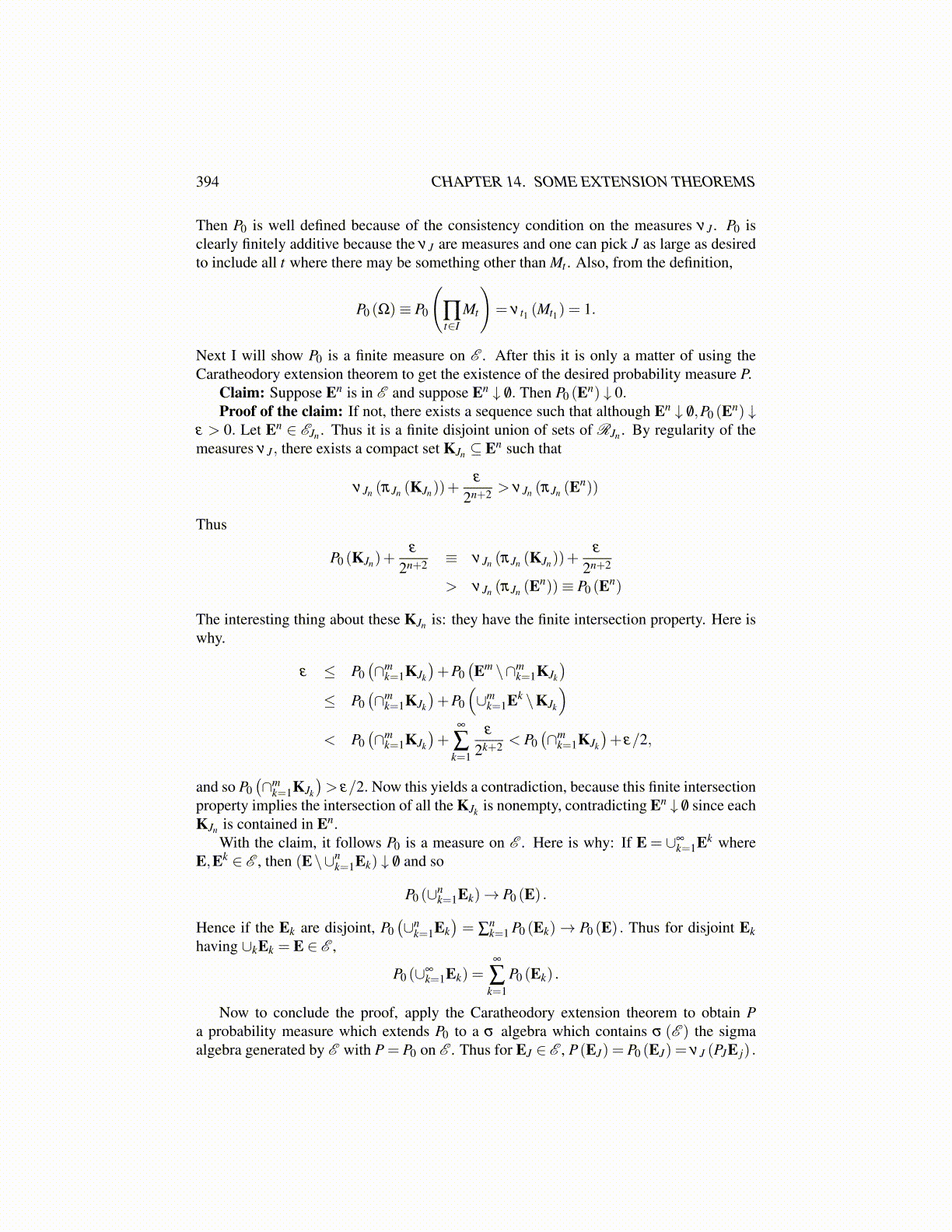
394 CHAPTER 14. SOME EXTENSION THEOREMS
Then P0 is well defined because of the consistency condition on the measures νJ . P0 isclearly finitely additive because the νJ are measures and one can pick J as large as desiredto include all t where there may be something other than Mt . Also, from the definition,
P0 (Ω)≡ P0
(∏t∈I
Mt
)= ν t1 (Mt1) = 1.
Next I will show P0 is a finite measure on E . After this it is only a matter of using theCaratheodory extension theorem to get the existence of the desired probability measure P.
Claim: Suppose En is in E and suppose En ↓ /0. Then P0 (En) ↓ 0.Proof of the claim: If not, there exists a sequence such that although En ↓ /0,P0 (En) ↓
ε > 0. Let En ∈ EJn . Thus it is a finite disjoint union of sets of RJn . By regularity of themeasures νJ , there exists a compact set KJn ⊆ En such that
νJn (πJn (KJn))+ε
2n+2 > νJn (πJn (En))
Thus
P0 (KJn)+ε
2n+2 ≡ νJn (πJn (KJn))+ε
2n+2
> νJn (πJn (En))≡ P0 (En)
The interesting thing about these KJn is: they have the finite intersection property. Here iswhy.
ε ≤ P0(∩m
k=1KJk
)+P0
(Em \∩m
k=1KJk
)≤ P0
(∩m
k=1KJk
)+P0
(∪m
k=1Ek \KJk
)< P0
(∩m
k=1KJk
)+
∞
∑k=1
ε
2k+2 < P0(∩m
k=1KJk
)+ ε/2,
and so P0(∩m
k=1KJk
)> ε/2. Now this yields a contradiction, because this finite intersection
property implies the intersection of all the KJk is nonempty, contradicting En ↓ /0 since eachKJn is contained in En.
With the claim, it follows P0 is a measure on E . Here is why: If E = ∪∞k=1Ek where
E,Ek ∈ E , then (E\∪nk=1Ek) ↓ /0 and so
P0 (∪nk=1Ek)→ P0 (E) .
Hence if the Ek are disjoint, P0(∪n
k=1Ek)= ∑
nk=1 P0 (Ek)→ P0 (E) . Thus for disjoint Ek
having ∪kEk = E ∈ E ,
P0 (∪∞k=1Ek) =
∞
∑k=1
P0 (Ek) .
Now to conclude the proof, apply the Caratheodory extension theorem to obtain Pa probability measure which extends P0 to a σ algebra which contains σ (E ) the sigmaalgebra generated by E with P = P0 on E . Thus for EJ ∈ E , P(EJ) = P0 (EJ) = νJ (PJE j) .